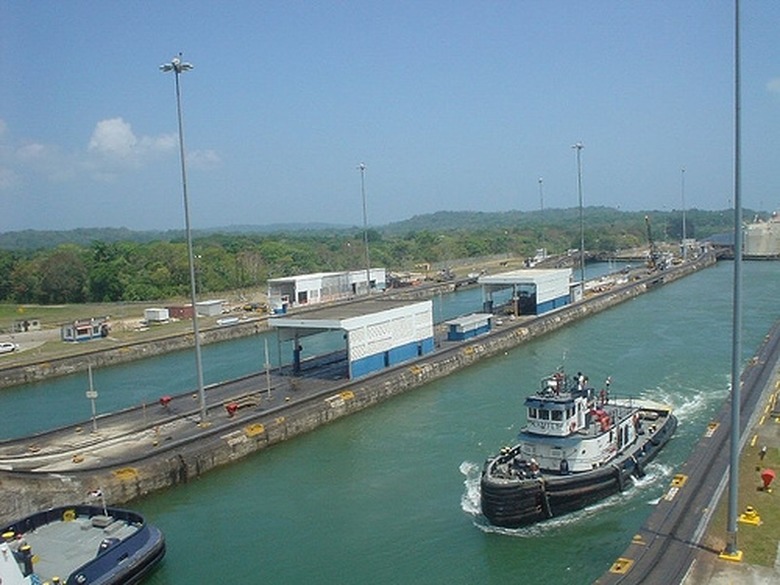What Two Bodies Of Water Does The Panama Canal Connect?
One of the engineering marvels of the world, the Panama Canal, joins the Atlantic Ocean with the Pacific through the country of Panama in Central America. The country established the Panama Canal Authority (ACP), an independently financed, autonomous body to manage and operate the canal.
Geography
Geography
Traffic from Europe and Africa on the Atlantic side, as well as from Asia and Australia on the Pacific side, travel the canal, which straddles the isthmus joining North and South America. Using a series of locks, the canal raises ships from sea level up by 85 feet to the level of Gatun Lake, whose natural size and location was used to ease construction.
History
History
Built by both the French and the Americans, the Panama Canal was completed in 1914, two years ahead of schedule. It formally opened in August, the start of World War I. Though the United States had signed a perpetual lease agreement with Panama before construction, many locals believed the canal to be rightfully theirs. In 1977, the U.S. signed a treaty granting Panamanians free control of the canal as long as they guaranteed the waterway's permanent neutrality.
Description
Description
Three locks raise and lower passing vessels: Gatun is on the Atlantic side, and Pedro Miguel and Miraflores are on the Pacific side. Each lock chamber is 110 feet wide by 304 feet long and can handle private boats and large cargo vessels up to 105 feet wide and 964 feet long with a draft (depth) of up to 36 feet. The canal runs nearly 50 miles between oceans.
Operations
Operations
The canal is open 24 hours a day, 365 days a year and handles about 13,000 to 14,000 ships. It employs about 9,000 workers and charges tolls based on ship size, type and cargo. As of September 2009, the cost is between $2 and $4 for every 10,000 tons for large ships. Smaller vessels pay based on length with a minimum toll of $500 for boats shorter than 50 feet and $1,500 for those longer than 100 feet.
Travel
Travel
According to the ACP, the canal is Panama's best-known tourist destination, traversed by many cruise lines like Royal Caribbean, Carnival and Seabourn. For example, Royal Caribbean has a 13-day Panama Cruise that ranges from $896 to $2,186. It begins in San Diego and stops in Cabo San Lucas and Acapulco before devoting a full day to cruising the canal. The journey also stops at Panama and Aruba before ending in Puerto Rico.
Cite This Article
MLA
Locsin, Aurelio. "What Two Bodies Of Water Does The Panama Canal Connect?" sciencing.com, https://www.sciencing.com/two-water-panama-canal-connect-5419311/. 24 April 2017.
APA
Locsin, Aurelio. (2017, April 24). What Two Bodies Of Water Does The Panama Canal Connect?. sciencing.com. Retrieved from https://www.sciencing.com/two-water-panama-canal-connect-5419311/
Chicago
Locsin, Aurelio. What Two Bodies Of Water Does The Panama Canal Connect? last modified March 24, 2022. https://www.sciencing.com/two-water-panama-canal-connect-5419311/
